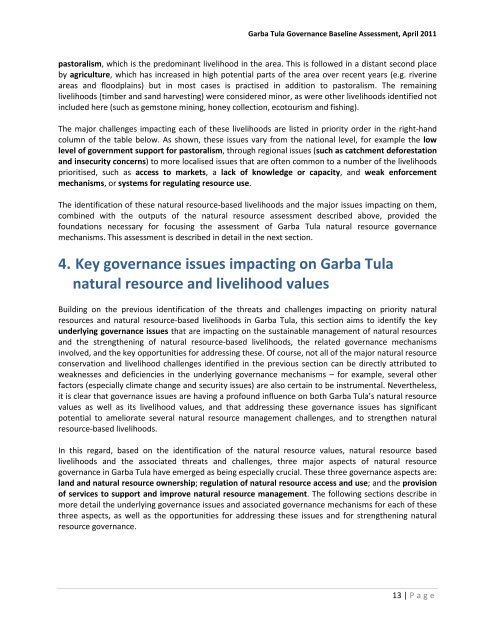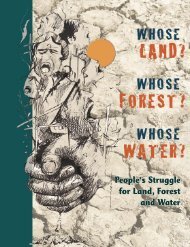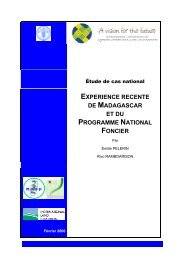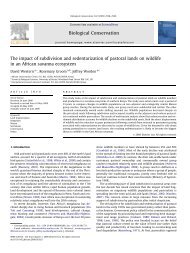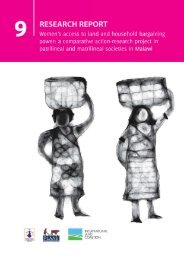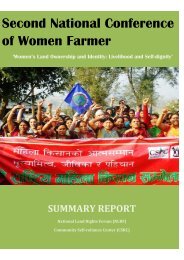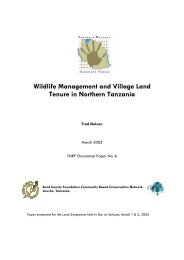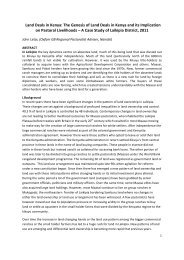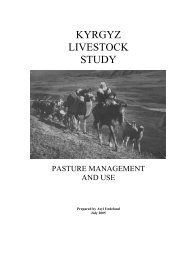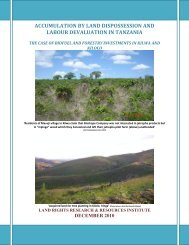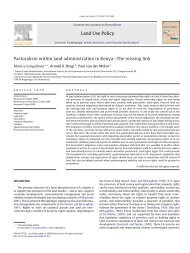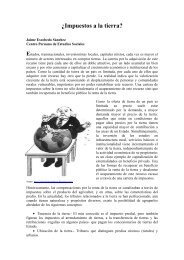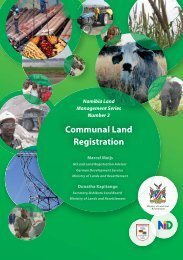Garba Tula Governance Assessment Final Report ... - Land Portal
Garba Tula Governance Assessment Final Report ... - Land Portal
Garba Tula Governance Assessment Final Report ... - Land Portal
You also want an ePaper? Increase the reach of your titles
YUMPU automatically turns print PDFs into web optimized ePapers that Google loves.
<strong>Garba</strong> <strong>Tula</strong> <strong>Governance</strong> Baseline <strong>Assessment</strong>, April 2011<br />
pastoralism, which is the predominant livelihood in the area. This is followed in a distant second place<br />
by agriculture, which has increased in high potential parts of the area over recent years (e.g. riverine<br />
areas and floodplains) but in most cases is practised in addition to pastoralism. The remaining<br />
livelihoods (timber and sand harvesting) were considered minor, as were other livelihoods identified not<br />
included here (such as gemstone mining, honey collection, ecotourism and fishing).<br />
The major challenges impacting each of these livelihoods are listed in priority order in the right-hand<br />
column of the table below. As shown, these issues vary from the national level, for example the low<br />
level of government support for pastoralism, through regional issues (such as catchment deforestation<br />
and insecurity concerns) to more localised issues that are often common to a number of the livelihoods<br />
prioritised, such as access to markets, a lack of knowledge or capacity, and weak enforcement<br />
mechanisms, or systems for regulating resource use.<br />
The identification of these natural resource-based livelihoods and the major issues impacting on them,<br />
combined with the outputs of the natural resource assessment described above, provided the<br />
foundations necessary for focusing the assessment of <strong>Garba</strong> <strong>Tula</strong> natural resource governance<br />
mechanisms. This assessment is described in detail in the next section.<br />
4. Key governance issues impacting on <strong>Garba</strong> <strong>Tula</strong><br />
natural resource and livelihood values<br />
Building on the previous identification of the threats and challenges impacting on priority natural<br />
resources and natural resource-based livelihoods in <strong>Garba</strong> <strong>Tula</strong>, this section aims to identify the key<br />
underlying governance issues that are impacting on the sustainable management of natural resources<br />
and the strengthening of natural resource-based livelihoods, the related governance mechanisms<br />
involved, and the key opportunities for addressing these. Of course, not all of the major natural resource<br />
conservation and livelihood challenges identified in the previous section can be directly attributed to<br />
weaknesses and deficiencies in the underlying governance mechanisms – for example, several other<br />
factors (especially climate change and security issues) are also certain to be instrumental. Nevertheless,<br />
it is clear that governance issues are having a profound influence on both <strong>Garba</strong> <strong>Tula</strong>’s natural resource<br />
values as well as its livelihood values, and that addressing these governance issues has significant<br />
potential to ameliorate several natural resource management challenges, and to strengthen natural<br />
resource-based livelihoods.<br />
In this regard, based on the identification of the natural resource values, natural resource based<br />
livelihoods and the associated threats and challenges, three major aspects of natural resource<br />
governance in <strong>Garba</strong> <strong>Tula</strong> have emerged as being especially crucial. These three governance aspects are:<br />
land and natural resource ownership; regulation of natural resource access and use; and the provision<br />
of services to support and improve natural resource management. The following sections describe in<br />
more detail the underlying governance issues and associated governance mechanisms for each of these<br />
three aspects, as well as the opportunities for addressing these issues and for strengthening natural<br />
resource governance.<br />
13 | P a g e


